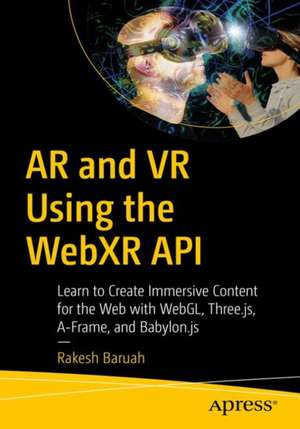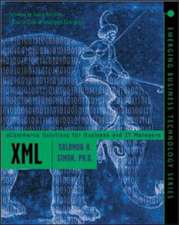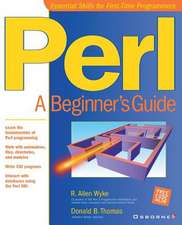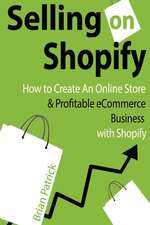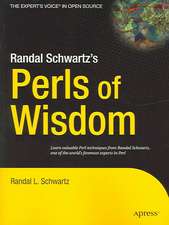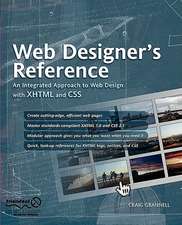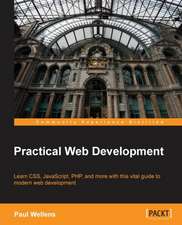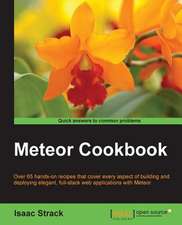AR and VR Using the WebXR API: Learn to Create Immersive Content with WebGL, Three.js, and A-Frame
Autor Rakesh Baruahen Limba Engleză Paperback – dec 2020
Gain an in-depth knowledge in immersive web development to create augmented reality (AR) and virtual reality (VR) applications inside web browsers using WebXR API, WebGL, Three.js, and A-Frame. This project-based book will provide the practice and portfolio content to make the most of what the futures of spatial computing and immersive technology have to offer.
Beginning with technical analysis of how web browsers function, the book covers programming languages such as WebGL, JavaScript, and HTML, with an eye on a complete understanding of the WebXR lifecycle. You'll then explore how contemporary web browsers work at the code level and see how to set up a local development server and use it with the Visual Studio Code IDE to create 3D animation in the WebGL programming language.
With a familiarity of the web-rendering pipeline in place, you’ll venture on to WebGL abstractions such as the Three.js JavaScript library and Mozilla’s A-Frame XRFramework, which use WebXR to create high-end visual effects. In the final projects of the book, you’ll create an augmented reality web session for an Android phone device, and create a VR scene in A-Frame (built on Three.js) to demo essential components of the WebXR API pertaining to user positioning and interaction.
Game engines have become common-place for the creation of mixed reality content. However, developers not interested in learning entirely new workflows may be better suited to work within a medium almost universally open to all—the web; AR and VR Using the WebXR API will show you the way.
Beginning with technical analysis of how web browsers function, the book covers programming languages such as WebGL, JavaScript, and HTML, with an eye on a complete understanding of the WebXR lifecycle. You'll then explore how contemporary web browsers work at the code level and see how to set up a local development server and use it with the Visual Studio Code IDE to create 3D animation in the WebGL programming language.
With a familiarity of the web-rendering pipeline in place, you’ll venture on to WebGL abstractions such as the Three.js JavaScript library and Mozilla’s A-Frame XRFramework, which use WebXR to create high-end visual effects. In the final projects of the book, you’ll create an augmented reality web session for an Android phone device, and create a VR scene in A-Frame (built on Three.js) to demo essential components of the WebXR API pertaining to user positioning and interaction.
Game engines have become common-place for the creation of mixed reality content. However, developers not interested in learning entirely new workflows may be better suited to work within a medium almost universally open to all—the web; AR and VR Using the WebXR API will show you the way.
What You'll Learn
- Master the creation of virtual reality and augmented reality features for web page
- Prepare to work as an immersive web developer with a portfolio of projects in sought-after technologies
- Review the fundamentals of writing shaders in WebGL
- Experience the unity between client, server, and cloud architecture as it applies to location-based AR
Who This Book Is For
Preț: 262.92 lei
Preț vechi: 328.65 lei
-20% Nou
Puncte Express: 394
Preț estimativ în valută:
50.31€ • 52.67$ • 41.63£
50.31€ • 52.67$ • 41.63£
Carte disponibilă
Livrare economică 15-29 martie
Preluare comenzi: 021 569.72.76
Specificații
ISBN-13: 9781484263174
ISBN-10: 1484263170
Pagini: 328
Ilustrații: XXIII, 328 p. 48 illus.
Dimensiuni: 155 x 235 mm
Greutate: 0.54 kg
Ediția:1st ed.
Editura: Apress
Colecția Apress
Locul publicării:Berkeley, CA, United States
ISBN-10: 1484263170
Pagini: 328
Ilustrații: XXIII, 328 p. 48 illus.
Dimensiuni: 155 x 235 mm
Greutate: 0.54 kg
Ediția:1st ed.
Editura: Apress
Colecția Apress
Locul publicării:Berkeley, CA, United States
Cuprins
Chapter 1: Getting Started. – Chapter 2: Up and Running with WebGL. – Chapter 3: Toward the 3rd Dimension in WebGL. – Chapter 4: Matrices, Transformations, and Perspective in WebGL. – Chapter 5: Diving into Three.js. – Chapter 6: Entering VR through the WebXR API. – Chapter 7: Augmented Reality with Three.js and the WebXR API. – Chapter 8: Building Virtual Reality for the Web with A-Frame. – Chapter 9: Physics and User Interaction in A-Frame through the WebXR Gamepad API. – Chapter 10: Deploying 3D Animated Models in AR with A-Frame and GitHub Pages.
Notă biografică
Rakesh Baruah is a writer and creator with 15 years of experience in new media, film, and television in New York City. After completing an MFA in screenwriting and directing for film from Columbia University, Rakesh joined the writers’ room of a hit, primetime, network drama as an assistant. The experience opened his eyes to the limits of television and the opportunities promised by 3D, immersive content. In 2016 he began a self-guided journey toward mixed reality design that has taken him through startups, bootcamps, the Microsoft offices, and many, many hours in front of a computer. He is the author of one previous book on virtual reality and the Unity Game Engine and has received an Nvidia-certified nanodegree in Computer Vision. He shares what he’s learned with you in a style and format designed specifically for the person who, in high school, preferred English class to Trigonometry.
Textul de pe ultima copertă
Gain an in-depth knowledge in immersive web development to create augmented reality (AR) and virtual reality (VR) applications inside web browsers using WebXR API, WebGL, Three.js, and A-Frame. This project-based book will provide the practice and portfolio content to make the most of what the futures of spatial computing and immersive technology have to offer.
Beginning with technical analysis of how web browsers function, the book covers programming languages such as WebGL, JavaScript, and HTML, with an eye on a complete understanding of the WebXR lifecycle. You'll then explore how contemporary web browsers work at the code level and see how to set up a local development server and use it with the Visual Studio Code IDE to create 3D animation in the WebGL programming language.
With a familiarity of the web-rendering pipeline in place, you’ll venture on to WebGL abstractions such as the Three.js JavaScript library and Mozilla’s A-Frame XR Framework, which use WebXR to create high-end visual effects. In the final projects of the book, you’ll create an augmented reality web session for an Android phone device, and create a VR scene in A-Frame (built on Three.js) to demo essential components of the WebXR API pertaining to user positioning and interaction.
Game engines have become common-place for the creation of mixed reality content. However, developers not interested in learning entirely new workflows may be better suited to work within a medium almost universally open to all—the web; AR and VR Using the WebXR API will show you the way.
You will:
Beginning with technical analysis of how web browsers function, the book covers programming languages such as WebGL, JavaScript, and HTML, with an eye on a complete understanding of the WebXR lifecycle. You'll then explore how contemporary web browsers work at the code level and see how to set up a local development server and use it with the Visual Studio Code IDE to create 3D animation in the WebGL programming language.
With a familiarity of the web-rendering pipeline in place, you’ll venture on to WebGL abstractions such as the Three.js JavaScript library and Mozilla’s A-Frame XR Framework, which use WebXR to create high-end visual effects. In the final projects of the book, you’ll create an augmented reality web session for an Android phone device, and create a VR scene in A-Frame (built on Three.js) to demo essential components of the WebXR API pertaining to user positioning and interaction.
Game engines have become common-place for the creation of mixed reality content. However, developers not interested in learning entirely new workflows may be better suited to work within a medium almost universally open to all—the web; AR and VR Using the WebXR API will show you the way.
You will:
- Master the creation of virtual reality and augmented reality features for web page
- Prepare to work as an immersive web developer with a portfolio of projects in sought-after technologies
- Review the fundamentals of writing shaders in WebGL
- Experience the unity between client, server, and cloud architecture as it applies to location-based AR
Caracteristici
Features the latest version Web XR API (updated on April 21, 2020 though not yet released to the public) Offers instruction on WebGL, Three.js, A-Frame, and Babylon.js all-in-one Extends skills commonly developed in expensive coding boot camps
